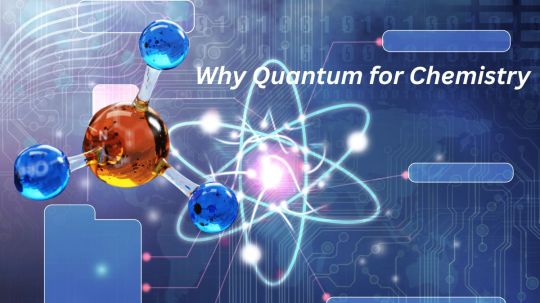#openshellmolecules
Explore tagged Tumblr posts
Text
IBM’s Hybrid Quantum-Classical Method to Open Shell Systems

Open-shell systems
IBM and Lockheed Martin Improve Chemistry Simulation with Classical and Quantum Computing
New research represents complex open-shell molecules used in materials science and aerospace using a hybrid method.
IBM Quantum and Lockheed Martin experts showed how quantum computers can accurately describe electrical systems in The Journal of Chemical Theory and Computation. Some molecules' structures are difficult to duplicate using classical methods. These challenging compounds are called “open-shell” molecules.
This study is the first to employ sample-based quantum diagonalisation (SQD) on open shell systems. IBM researchers believe SQD is a promising candidate for near-term quantum advantage demonstrations because it allows researchers to use high-performance quantum and conventional computers to solve tough simulation challenges.
Quantum Chemistry—Why?
Quantum chemistry has long been considered a promising use of quantum computers. High-performance computers struggle to model transition metals, radical species, transition states, and excited states due to strong electron correlation. The processing cost of precisely simulating even small molecules increases exponentially with the number of interacting electrons, making ideal solutions almost impossible.
Quantum computers offer an alternative. Quantum computer simulations of quantum chemistry can accurately calculate these complex systems' electronic structure and energy. As they acquire fault-tolerance, quantum computers may mimic strongly coupled systems more accurately and at bigger scales than classical approximation methods. In computational chemistry, a singlet-triplet gap is a crucial energy difference between molecule electronic states. These transition energies are essential for understanding chemical reactivity, generating compounds with specific properties, modelling excited-state behaviour in materials, and confirming studies.
Modelling open-shell molecules with unpaired electrons is tricky. Open shell systems are more sophisticated than closed-shell molecules with all electrons linked. High reactivity, magnetic properties, and sophisticated “multi-reference” electronic structures that need several wave functions for correct representation are achievable. These properties are important in atmospheric, catalytic, and combustion chemistry, but modelling is difficult.
Their unpaired electrons create a complicated correlation structure, making radicals and transition metal complexes difficult to manage using classical methods. Quantum algorithms are superior for open shell systems because they naturally encode and process electron entanglement.
Methylene (CH2): A Key Test Case
Most recent research focused on methylene (CH2). Atmospheric chemistry, combustion emissions, and interstellar activities depend on CH2, a three-atom reactive molecule.
Electronically, CH2 has a diradical triplet ground state. This state gives the carbon atom a spin of one due to its outer shell of two unpaired electrons with parallel spins. CH2's stable, low-energy triplet form is interesting. The initial excited state is a carbene singlet state with opposing spins on the carbon electrons.
The singlet-triplet energy gap, the energy difference between these states, must be accurately predicted to understand CH2's behaviour in complex chemical processes. Classical methods often struggle to estimate this gap in open-shell compounds like CH2.
Quantum computers can simulate CH2 and other radical species' reactivity because they can manage complex wavefunctions and electron correlations.
Study Results
Using an IBM quantum processor and SQD, the researchers determined CH2's singlet and triplet dissociation energies and energy gaps. This study legitimises quantum approaches for molecules with complex electronic structures, such as carbenes and radicals, by applying the SQD method to an open-shell system for the first time.
Compared to high-accuracy classical techniques (Selected Configuration Interaction, or SCI), studies showed:
Singlet dissociation energy is strongly agreed upon within a few milli Hartrees of the SCI reference.
Near equilibrium geometries have consistent triplet energies. accurate singlet-triplet energy gap prediction that matches experiment and classical modelling.
The computations used a 52-qubit IBM quantum processor and up to 3,000 two-qubit gates per experiment.
Quantum-focused supercomputing
IBM's quantum-centric supercomputing infrastructure, which blends quantum computers with regular computing resources, hosted the experiment. This method allows scalable molecular system simulations.
This study reveals that quantum computers are beginning to succeed in chemical simulations. Radical molecules are crucial in sensor design, combustion chemistry, and aerospace, and simulating their behaviour can improve predictive models and new technologies. As quantum hardware and SQD improve, this strategy allows quantum tools to model complex reaction dynamics and develop superior materials.
#Openshellsystems#quantumchemistry#samplebasedquantumdiagonalisation#openshellmolecules#quantumcentricsupercomputing#SQD#technology#technews#technologynews#news#govindhtech
0 notes